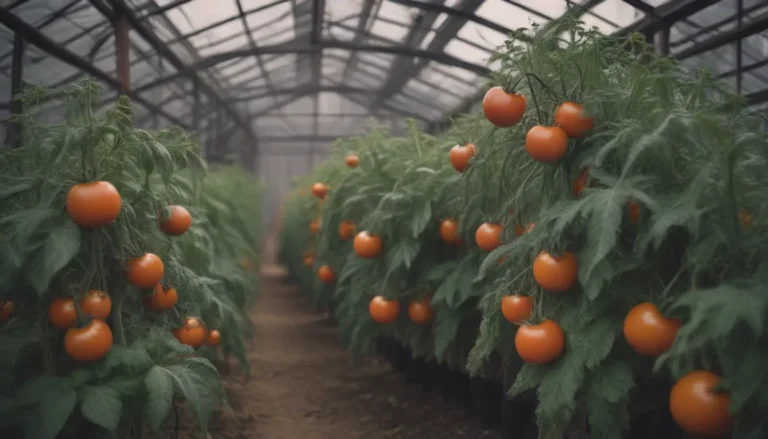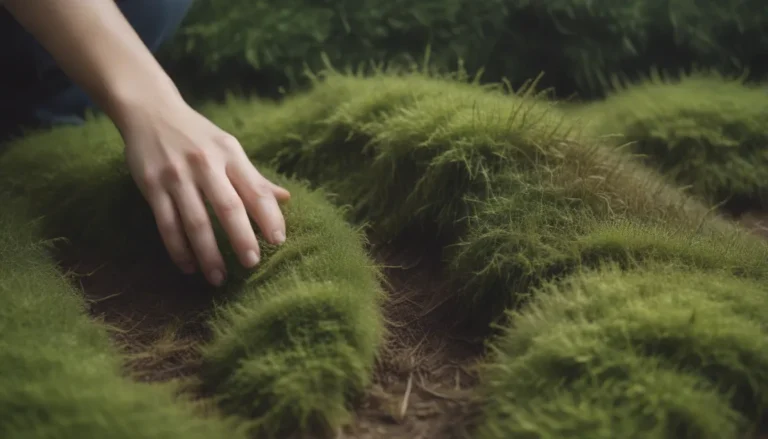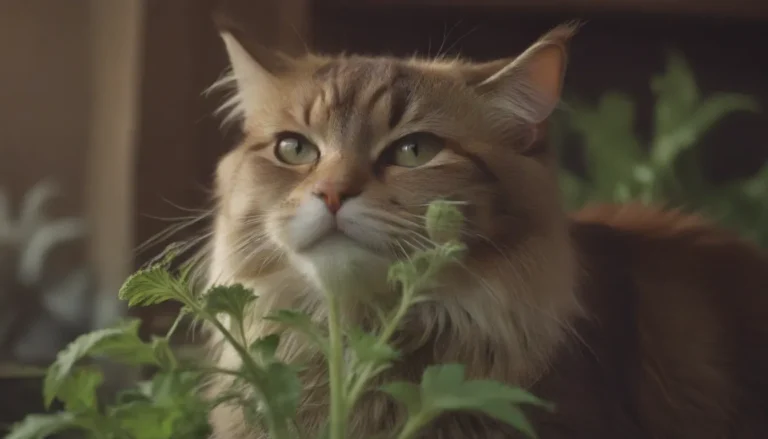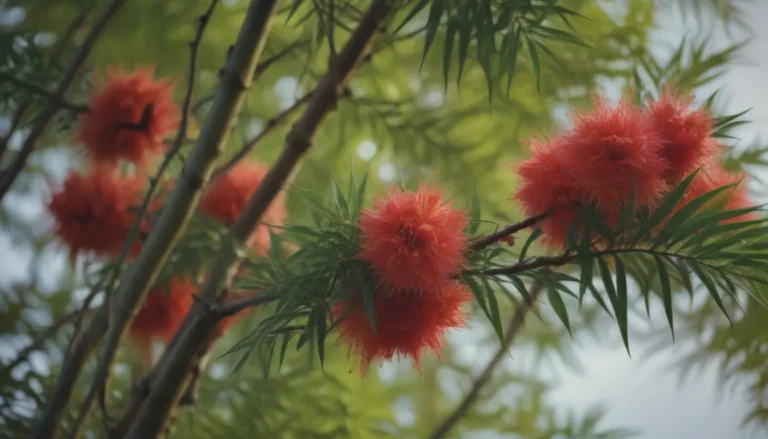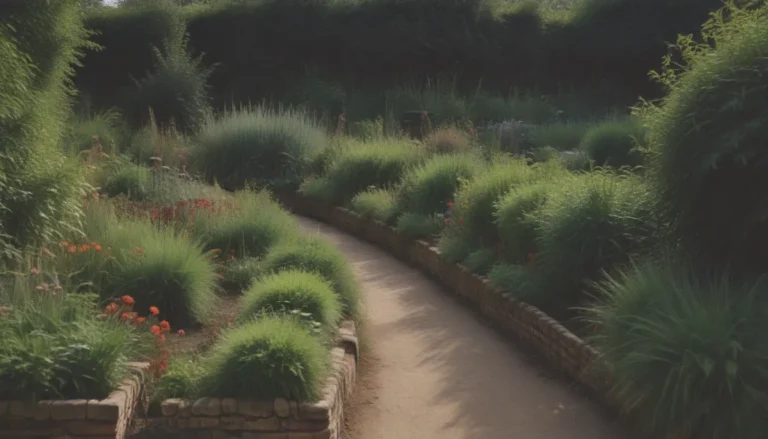60 Best Outdoor Plants with Purple Flowers That You Need in Your Garden
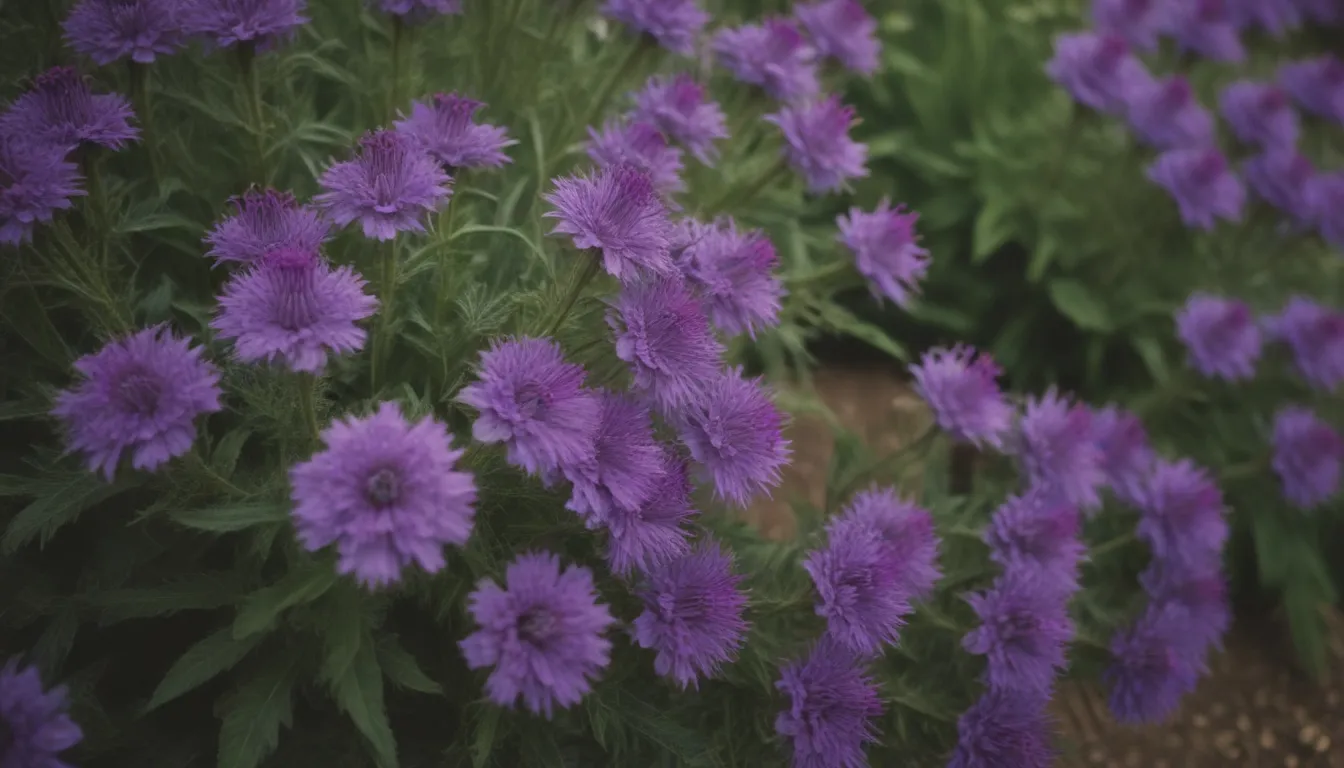
When it comes to adding a touch of royalty and elegance to your garden, nothing beats plants with purple flowers. Not only are they visually stunning, but they also have a soothing effect that can transform any outdoor space into a beautiful oasis. From delicate lavender hues to deep violet shades, purple flowering plants come in a variety of tones that can add depth and richness to your landscape.
In this comprehensive guide, we will explore 60 of the best outdoor plants with purple flowers that you should consider adding to your garden. These plants range from elegant perennials to vibrant annuals, ground covers, climbing plants, and more. Whether you’re looking to create a colorful border, add a pop of color to your patio, or attract butterflies and pollinators to your garden, these purple flowering plants are sure to delight your senses.
Why Choose Plants with Purple Flowers?
- Purple is a symbol of royalty, richness, and elegance.
- Purple flowers have a soothing effect on the landscape.
- Purple flowering plants come in a variety of shades, from light lavender to deep violet.
- Purple flowers can attract butterflies, bees, and other pollinators to your garden.
May Night Salvia (Salvia x sylvestris ‘May Night’)
May Night salvia is a deep bluish-purple perennial that produces small blooms on flower spikes about 2 feet tall. Known for its long blooming period from May through June, this plant is a valuable addition to any garden. It is perfect for perennial borders, cottage gardens, butterfly gardens, or wildflower gardens. Don’t forget to cut back the plants in early spring to encourage fresh new growth.
- USDA Growing Zones:
- Color Varieties:
- Sun Exposure:
- Soil Needs:
Caradonna Salvia (Salvia nemorosa ‘Caradonna’)
Similar to May Night, Caradonna salvia features a deeper shade of purple and slender flower stalks that highlight the flowers. It grows 1 to 2 feet tall and blooms from June to September. This plant does well in dry conditions but flowers best with regular moisture.
- USDA Growing Zones:
- Color Varieties:
- Sun Exposure:
- Soil Needs:
Lamium (Lamium maculatum ‘Purple Dragon’)
Lamium maculatum, commonly known as purple dragon, is a ground cover plant with silvery foliage and light purple flowers. This plant doesn’t tolerate foot traffic and should be placed out of the way. Keep it away from direct sunlight to prevent scorching.
- USDA Growing Zones:
- Color Varieties:
- Sun Exposure:
- Soil Needs:
Allium (Allium spp.)
Alliums are not only known for their colorful flowers but also for their unique globular shape. These spring-flowering bulbs range from 2 to 5 feet in height and bloom in late spring to early summer. Plant them in the fall for a stunning display the following season.
- USDA Growing Zones:
- Color Varieties:
- Sun Exposure:
- Soil Needs:
Petunia (Petunia x hybrida)
Petunias are popular for their wide, trumpet-shaped blooms and come in a variety of colors and patterns, including shades of purple. These annuals are perfect for hanging baskets, window boxes, and bedding plants. Ensure they receive plenty of sun and water to keep them blooming all season long.
- USDA Growing Zones:
- Color Varieties:
- Sun Exposure:
- Soil Needs:
Tip: Plant the same flower in various purple shades for added interest in your garden. Also, incorporate plants with purple foliage to add texture.
Chrysanthemum
Chrysanthemums, or mums, are a well-loved garden flower that can be grown as annuals or perennials. Pinch them back until late June for bushier growth and more flowers. Some gorgeous purple varieties to try include ‘Purple Andrea’, ‘Grape Queen’, and ‘Grandchild’.
- USDA Growing Zones:
- Color Varieties:
- Sun Exposure:
- Soil Needs:
Azalea (Rhododendron spp.)
Azaleas are stunning evergreen shrubs with spring blooms that thrive in partial shade to full sun. They come in various sizes and colors, including lovely purples like ‘Autumn Lilac’, ‘Lee’s Dark Purple’, and ‘Purple Splendor’. Make sure to provide even soil moisture for these hardy shrubs.
- USDA Growing Zones:
- Color Varieties:
- Sun Exposure:
- Soil Needs:
Columbine (Aquilegia vulgaris)
Columbine plants have delicate flowers that bloom in April and May, reaching heights of 1 to 3 feet. These plants thrive in cottage gardens and rock gardens but don’t like excessive heat. Mulch around the plant to keep the roots cool and moist.
- USDA Growing Zones:
- Color Varieties:
- Sun Exposure:
- Soil Needs:
Larkspur (Consolida ajacis)
Larkspurs are tough and hardy annual flowers that grow up to 3 to 4 feet tall with spiky blooms in spring and summer. They self-seed freely, so be cautious as they are toxic to kids and pets. These plants add a touch of purple to your garden and attract pollinators.
- USDA Growing Zones:
- Color Varieties:
- Sun Exposure:
- Soil Needs:
Lobelia (Lobelia erinus)
Lobelia is a summer-blooming plant with trailing blue/purple flowers. These plants have five petals and self-clean, meaning they don’t require deadheading. Revive them in hot weather by cutting them back and providing regular water.
- USDA Growing Zones:
- Color Varieties:
- Sun Exposure:
- Soil Needs:
Jackman’s Clematis (Clematis ‘Jackmanii’)
Jackman’s clematis is a flowering vine with large, deep purple flowers in mid-summer. Train them to climb on trellises, arbors, walls, and fences for a stunning display. Ensure they receive sunlight but keep the roots cool by mulching or planting short plants nearby.
- USDA Growing Zones:
- Color Varieties:
- Sun Exposure:
- Soil Needs:
Dahlia (Dahla spp.)
Dahlias are known for their lush beauty and vibrant colors, including shades of purple. Some popular varieties to consider are ‘Thomas Edison’, ‘Lilac Time’, and ‘Mikayla’. These plants require some effort in colder zones, but they are worth the beauty they bring to your garden.
- USDA Growing Zones:
- Color Varieties:
- Sun Exposure:
- Soil Needs:
Heliotrope (Heliotrope spp.)
Heliotrope is a shrub-like plant with clusters of fragrant blooms that bloom from summer through the first frost. These plants thrive in even soil moisture and must be kept away from soggy or dry soil. They are toxic if ingested, so be cautious around kids and pets.
- USDA Growing Zones:
- Color Varieties:
- Sun Exposure:
- Soil Needs:
Crocus (Crocus spp.)
Crocuses are harbingers of spring, with star-shaped blooms that appear in March and April. These small plants grow up to 3-6 inches tall and have grass-like foliage with a light stripe down the middle. Ensure they are not planted in soggy soil to prevent rot.
- USDA Growing Zones:
- Color Varieties:
- Sun Exposure:
- Soil Needs:
Verbena (Verbena spp.)
Verbena plants produce tiny, fragrant flowers in saucer-shaped clusters that can span up to 3 inches. These airy plants are easy to grow and come in various shades of purple. Train them to grow in compact spaces by regular pruning for continuous blooms.
- USDA Growing Zones:
- Color Varieties:
- Sun Exposure:
- Soil Needs:
Delphinium (Delphinium ‘Black Knight’)
Delphiniums are tall plants with spiked flowers, including the ‘Black Knight’ cultivar that adds a burst of dark purple to your garden. These plants bloom from June to July and require staking for optimal growth. Be cautious as they are toxic to kids and pets.
- USDA Growing Zones:
- Color Varieties:
- Sun Exposure:
- Soil Needs:
Purple Ice Plant (Delosperma cooperi)
The purple ice plant features finely textured petals surrounding solid centers and blooms through summer and fall. The leaves sparkle in sunlight, reflecting off tiny hairs on the surface. Ensure the plant is planted in well-draining soil to prevent it from sitting in soggy conditions.
- USDA Growing Zones:
- Color Varieties:
- Sun Exposure:
- Soil Needs:
Pacific Rhododendron (Rhododendron macrophyllum)
Pacific rhododendron shrubs produce showy bell-shaped flowers in spring and summer and have evergreen foliage. These hardy shrubs prefer low-nutrient soil and consistent soil moisture. Be cautious of drainage, as soggy conditions can be detrimental to their growth.
- USDA Growing Zones:
- Color Varieties:
- Sun Exposure:
- Soil Needs:
Butterfly Bush (Buddleja davidii)
Butterfly bush is a deciduous shrub that produces brightly colored flower spikes throughout summer and is attractive to butterflies and pollinators. Ensure to check for local regulations on planting this shrub, as it can be considered invasive in some areas. Consider sterile varieties to prevent invasive spreading.
- USDA Growing Zones:
- Color Varieties:
- Sun Exposure:
- Soil Needs:
Bougainvillea (Bougainvillea spp.)
Bougainvillea is a tropical genus that features vibrant, showy blooms that act as ground covers or can be trained to grow on supports like trellises or fences. These plants have thorns, so handle them with care. The large colorful blooms appear seasonally and provide a stunning addition to any garden.
- USDA Growing Zones:
- Color Varieties:
- Sun Exposure:
- Soil Needs:
Midnight Blue Rose (Rosa ‘Midnight Blue’)
The Midnight Blue rose is a beautiful cultivar with deep purple flowers that stretch around 2 to 3 inches across. These roses bloom from spring to fall and have a strong fragrance. Deadheading can encourage further blooming, but watch out for the thorns on these shrubs.
- USDA Growing Zones:
- Color Varieties:
- Sun Exposure:
- Soil Needs:
Rhapsody in Blue Rose (Rosa ‘Rhapsody in Blue’)
The Rhapsody in Blue rose cultivar is another stunning plant with purple flowers that bloom from late spring to fall. These flowers start out as vivid purple and fade to a mauve-gray color with bright gold stamens at the center. Deadhead spent blooms to promote repeat blooming.
- USDA Growing Zones:
- Color Varieties:
- Sun Exposure:
- Soil Needs:
Blue Beard (Caryopteris × clandonensis)
Blue beard, also known as blue spirea or blue mist, is a small shrub with a mounding growth habit and blue-violet flowers. These plants love sunny spots and require sharp soil drainage, as they are intolerant to soggy soil. Their delicate flowers resemble clouds of blue mist.
- USDA Growing Zones:
- Color Varieties:
- Sun Exposure:
- Soil Needs:
Winter Heath (Erica spp.)
Winter heaths are small evergreen shrubs with dense foliage that bloom during winter and early spring. These plants thrive in well-drained soil and look best when planted en masse. Prune them after flowering to maintain their shape and encourage new growth.
- USDA Growing Zones:
- Color Varieties:
- Sun Exposure:
- Soil Needs:
Lilac (Syringa vulgaris)
Lilac bushes are popular plants with purple flowers that bloom in mid to late spring. The branching clusters of tiny flowers have a sweet fragrance and range from blue-green to gray-green in foliage color. These low-maintenance shrubs benefit from pruning after flowering.
- USDA Growing Zones:
- Color Varieties:
- Sun Exposure:
- Soil Needs:
Heather (Calluna spp.)
Heather shrubs feature dainty purple flowers along long stems that bloom from summer to fall. These plants look striking when planted en masse and thrive in slopes or rock gardens. Ensure consistent moisture with well-draining soil and prune them in early spring.
- USDA Growing Zones:
- Color Varieties:
- Sun Exposure:
- Soil Needs:
Hydrangea (Hydrangea spp.)
Hydrangeas are popular garden plants that come in various colors, including shades of purple. These plants bloom from mid-summer to fall and require regular watering to thrive. The bloom color can be affected by soil pH, so ensure to provide suitable conditions for vibrant blooms.
- USDA Growing Zones:
- Color Varieties:
- Sun Exposure:
- Soil Needs:
Morning Glory (Ipomoea purpurea)
Morning glories are fast-growing annual vines with trumpet-shaped flowers that bloom in summer and fall. These low-maintenance plants don’t require pruning and can grow along the ground or up on supports. Ensure to water them regularly to keep them healthy and blooming.
- USDA Growing Zones:
- Color Varieties:
- Sun Exposure:
- Soil Needs:
Wisteria (Wisteria frutescens)
Wisteria is a woody vine with fragrant purple flowers that droop from stems in the spring. Provide sturdy support for these vines and enjoy the beautiful growth and blooms. These vines can reach up to 30 feet or longer under ideal growing conditions.
- USDA Growing Zones:
- Color Varieties:
- Sun Exposure:
- Soil Needs:
Lavender (Lavandula spp.)
Lavender is a fragrant herb that features purple flowers on upright spikes during summer. These plants thrive in full sun and well-drained soil. With little care needed in optimal conditions, lavender is a delightful addition to any garden.
- USDA Growing Zones:
- Color Varieties:
- Sun Exposure:
- Soil Needs:
Purple Coneflower (Echinacea purpurea)
The purple coneflower is an upright plant that blooms daisy-like flowers with spiny center cones in summer. These flowers attract pollinators and self-seed easily, so remove spent blooms to control their spread. The stiff stems and dark green foliage add interest to the garden.
- USDA Growing Zones:
- Color Varieties:
- Sun Exposure:
- Soil Needs:
Iris (Iris reticulata)
Irises come in a variety of shapes and colors, with slightly different appearances and growth habits. These flowers feature drooping outer petals and upright inner petals, creating an interesting shape. Irises attract butterflies and hummingbirds and require trimming back after frost.
- USDA Growing Zones:
- Color Varieties:
- Sun Exposure:
- Soil Needs:
Pansy (Viola x wittrockiana)
Pansies are popular annual flowers with large, colorful blooms that prefer cool weather and tolerate frosts. These plants bloom from fall through spring and come in a range of hues, including shades of purple. Ensure they receive adequate water and care to thrive in your garden.
- USDA Growing Zones:
- Color Varieties:
- Sun Exposure:
- Soil Needs:
Monkshood (Aconitum napellus)
Monkshood blooms late in the season and adds gorgeous deep violet color to the garden. These toxic plants come in various cultivars with hues ranging from white to deep purples and blues. Exercise caution as these plants are toxic if ingested.
- USDA Growing Zones:
- Color Varieties:
- Sun Exposure:
- Soil Needs:
Wild Violets (Viola papilionacea)
Wild violets are a common ground cover with sweet-smelling flowers that appear in mid-spring. These heart-shaped plants are important food sources for pollinators and have dark green leaves that last through the autumn. While some consider them weeds, their blooms are essential for pollinator health.
- USDA Growing Zones:
- Color Varieties:
- Sun Exposure:
- Soil Needs:
Grecian Windflower (Anemone blanda)
Grecian windflowers, also known as Balkan windflowers, are bulb plants that naturalize readily in well-draining soil. These daisy-like flowers come in shades of blue, white, light purple, and pink. Plant them in early spring for summer blooms in colder zones.
- USDA Growing Zones:
- Color Varieties:
- Sun Exposure:
- Soil Needs:
Grape Hyacinth (Muscari)
Grape hyacinths are spring-blooming bulbs with gorgeous purple flowers that add color to the garden. The classic Muscari armeniacum features deep violet-blue flowers, while other cultivars like Muscari latifolium offer bicolor options in periwinkle and plum.
- USDA Growing Zones:
- Color Varieties:
- Sun Exposure:
- Soil Needs:
Aster (Symphiotricum ‘Wood’s Purple’)
Asters, also known as Michaelmas daisies, bloom for weeks in early autumn and add a burst of color to the garden. ‘Wood’s Purple’ asters are light purple with yellow centers and grow about 12 inches tall. These plants love sunny spots and spread out happily among other perennials.
- USDA Growing Zones:
- Color Varieties:
- Sun Exposure:
- Soil Needs:
Dutch Hyacinth (Hyacinthus orientalis)
Dutch hyacinths are reliably fragrant spring bloomers with a colorful array of flowers. These bulbs are toxic to pets, so handle them with care. Noteworthy deep purple varieties include ‘Peter Stuyvesant’, ‘Purple Sensation’, and ‘Atlantic’.
- USDA Growing Zones:
- Color Varieties:
- Sun Exposure:
- Soil Needs:
Bachelor Buttons (Centaurea cynanus)
Bachelor buttons, also called cornflowers, are colorful annual flowers that look beautiful in cottage gardens. These flowers reseed readily
